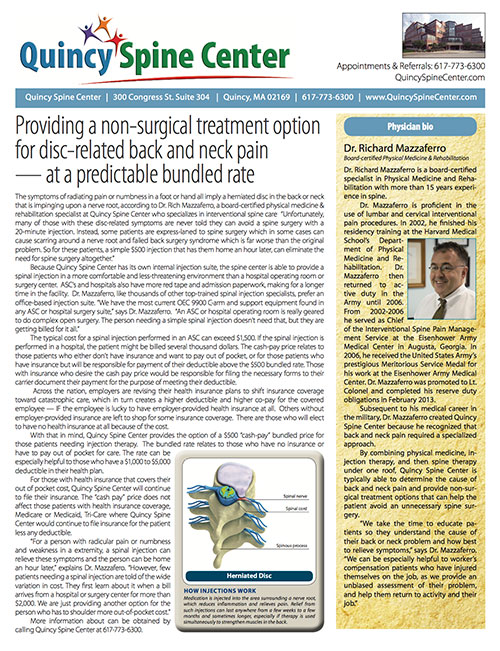Minimally Invasive Surgery
About Minimally Invasive Surgery | Benefits | Minimal Access Spinal Technologies | BMP
Several weeks of recovery may be required for traditional "open" spine surgery as it may involve a three-inch long incision, in which muscles and tissues are separated for optimal access to the injury site. The surgery usually results in trauma to surrounding tissues and some blood loss. Because of this the affected tissues and muscles need adequate healing time.
Spine surgery then home, same day
Innovative developments in minimally invasive techniques have pioneered better ways for the surgeon to access the spine, moreover making the recovery process more seamless. In minimally invasive spine surgery, a smaller incision is made, sometimes only a half-inch in length. The surgeon inserts special surgical instruments through these tiny incisions to access the damaged disc in the spine. Entry and repair to the damaged disc or vertebrae is achieved without harming nearby muscles and tissues when using minimally invasive techniques.
Minimally invasive spine surgery requires extensive training and experience to master use of the tools, but there is tremendous benefit for the patient. The incision is shorter, which means you aren't cutting through as much muscle and tissue to get access to the damaged area of the spine.
Benefits of minimally invasive spine surgery include:
- Smaller incision and smaller scar
- Less damage to tissues and muscles
- Less blood loss
- Less post-operative pain
- Less painful recovery
- Quicker return to activity
Unlike many other spine care providers, the spine patients who undergo minimally invasive surgery with Quincy Spine Center can often have their surgery on an outpatient basis and be home later the same day. Recovery in one's own home can be more comfortable than staying in a hospital bed.
Minimal Access Spinal Technologies (MAST)
With the introduction of minimal access spinal technologies (MAST), spine surgeons can make a smaller incision, while at the same time accomplish identical results as open spine surgery. Due to the acute accuracy provided by these tools, surgeons can access the vertebrae through the narrow probes with surgical cameras and tools.
BMP: A better option when fusion is necessary
Oftentimes, bone is harvested from the hip of a patient during traditional fusion procedures. Unfortunately, this process may cause additional pain and discomfort. BMP, also known as "bone morphogenetic protein", is a new bone-growth substance that eliminates the need for cutting bone from a person's hip.
Trace protein extracts are found in bones and are required for the bone to heal or regenerate. A sufficient amount of the protein must be available in order to begin bone formation. Scientists have developed a usable form of BMP that is now being used in place of bone harvested from a patient's hip. This bone graft is made from pure bone protein (minerals and collagen) and absorbable collagen sponge that promotes new bone formation. Studies show that the positive results achieved from surgery using BMP equal that of an autograft procedure (in which bone is taken from the hip).

Understanding Symptoms
Pain is not a good indicator of when to see a doctor for a spine problem. While a back spasm can be excruciating, the good news is that ligament strain doesn’t require surgery.

Quincy Bundled Rate
Find out more about a simple 20 minute office procedure — at a $700 bundled rate — that can eliminate the need for spine surgery.

Jeffrey Jackel, MD
Board-certified Anesthesiologist
Board-certified in Pain Medicine (exp)


